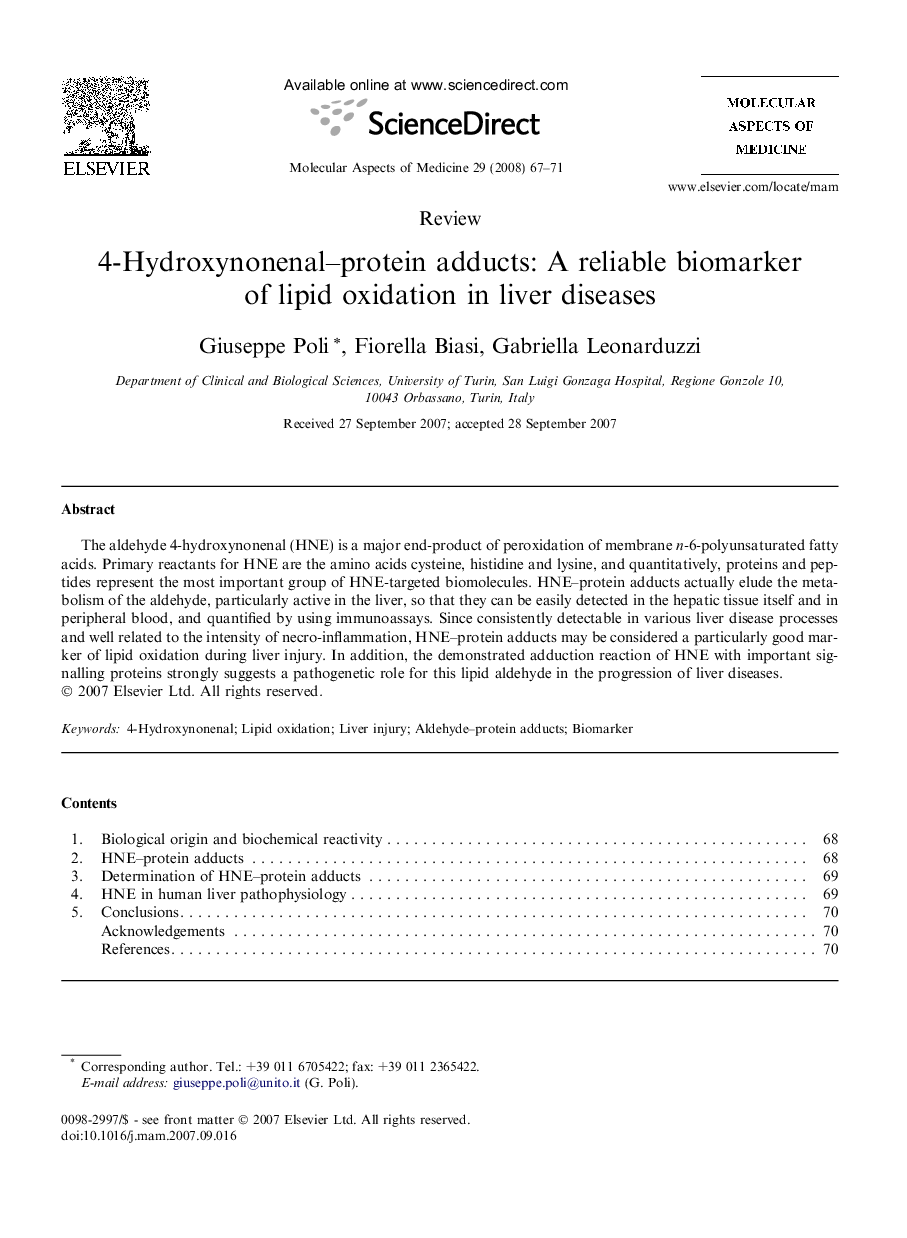| Article ID | Journal | Published Year | Pages | File Type |
|---|---|---|---|---|
| 1995930 | Molecular Aspects of Medicine | 2008 | 5 Pages |
The aldehyde 4-hydroxynonenal (HNE) is a major end-product of peroxidation of membrane n-6-polyunsaturated fatty acids. Primary reactants for HNE are the amino acids cysteine, histidine and lysine, and quantitatively, proteins and peptides represent the most important group of HNE-targeted biomolecules. HNE–protein adducts actually elude the metabolism of the aldehyde, particularly active in the liver, so that they can be easily detected in the hepatic tissue itself and in peripheral blood, and quantified by using immunoassays. Since consistently detectable in various liver disease processes and well related to the intensity of necro-inflammation, HNE–protein adducts may be considered a particularly good marker of lipid oxidation during liver injury. In addition, the demonstrated adduction reaction of HNE with important signalling proteins strongly suggests a pathogenetic role for this lipid aldehyde in the progression of liver diseases.
